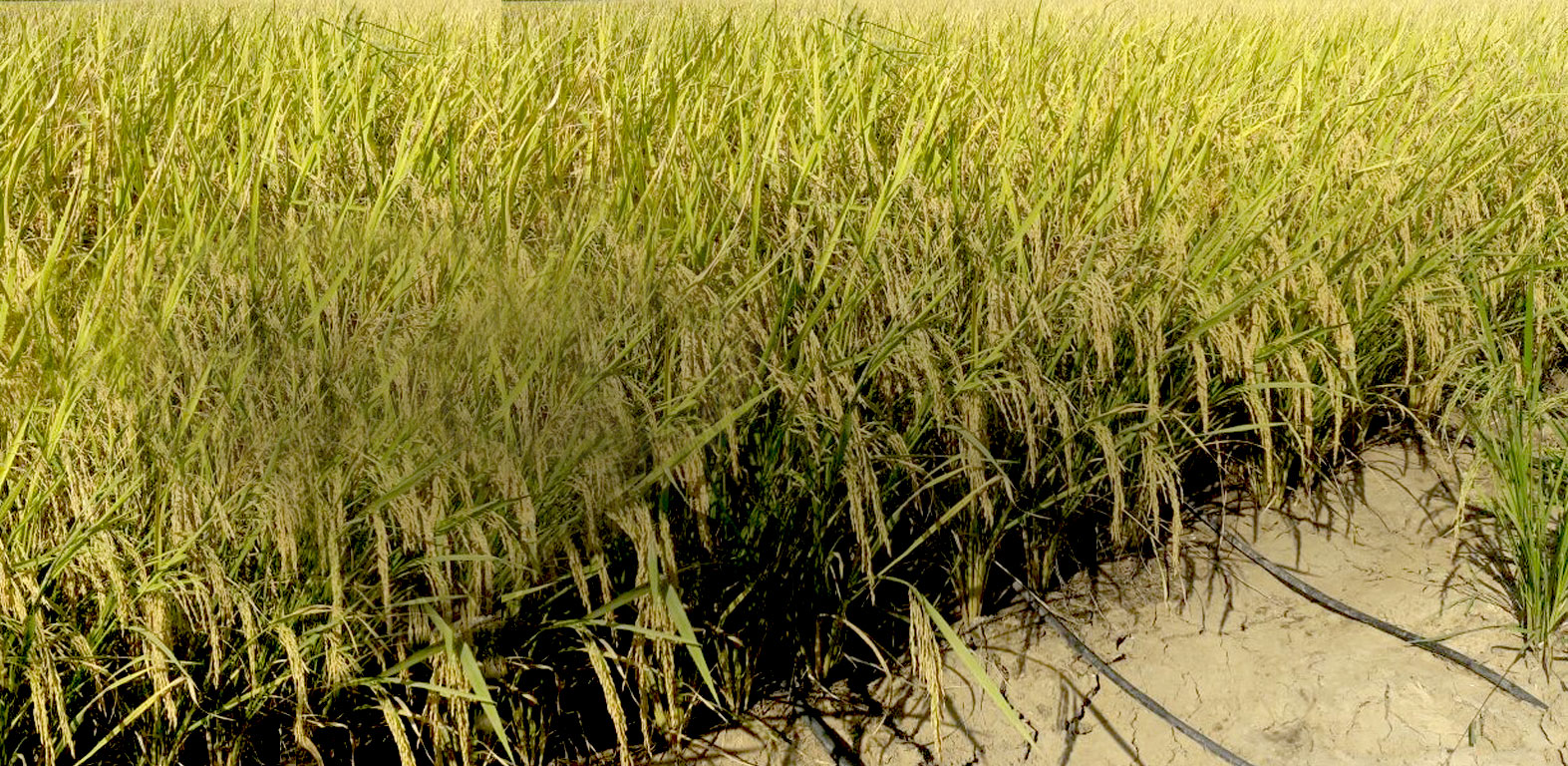Welcome to Jain Irrigation Systems Ltd.

Blog at Jains - HOW MUCH WATER DOES MY CROP NEED? Part 4. Rice
Rice Rice is the most irrigated crop in India and whole of South and South East Asia.
More than 75% of the rice production comes from 79 million ha of irrigated lowland. Over 17 million ha of Asia’s irrigated rice may experience "physical water scarcity" and 22 million ha may experience "economic water scarcity" by 2025 (Tuong and Bouman 2003). Really hardship scenario indeed.
RICE as grown in India is a water-guzzler, because farmers use on an average 15,000 litres to produce one kg of paddy, though water technologists at IARI say no more than 600 litres is needed if proper water management techniques are followed. Given that 45 per cent of the country's total irrigation water is used solely for rice cultivation, the need to improve farming methods, especially irrigation method, is imperative.
Besides being wasteful, excessive use of water results in lower yields and adverse environmental effects such as soil salinity and waterlogging. Paddy yields in irrigated regions of Tamil Nadu, Punjab and Haryana range from 5 to 6 ton/ha, where as in the high-rainfall areas of eastern UP, Bihar, West Bengal and Orissa, the yields are about 1.8 ton/ha. The main reasons for the poor yields are improper irrigation management and long duration waterlogging.
A large amount of water is lost in seepage and deep percolation. Loss from deep percolation is estimated at 50 per cent in heavy textured clay soils and about 85 per cent in light textured loamy sands and laterite soils. Studies in eastern India show effective soil management can reduce percolation losses by 20 per cent and also reduce the risk of crop failure during droughts. Still the water consumption in these cases are more than the water requirement of the crop.
Farmers widely believe that water should be stored to stand above the surface on paddy fields to prevent weed growth. But studies in West Bengal and Orissa show that standing water of more than 10 cm height leads to heavy leaching of soil nutrients and percolation losses resulting in very low grain yields.
Where does all the water go after one irrigates a crop field? Water moves out of the field in 7 different ways after an irrigation that floods the field: 1.Direct evaporation from the water surface, 2. Drift of water away from the field due to wind, 3. Transpiration through the body of the crop plant (Mainly thru leaves), 4. Evaporation from the wet ground exposed to the atmosphere, 5. Run off of water from the field, 6. Infiltration to lower soil strata and 7. Deep percolation to far deep soil profile and 8. Surface flow from rice fields to lower slopes.
Among these, the essential components of crop water use are only two: transpiration and soil surface evaporation. Hence water use by crop is referred to as ETP, Evapotranspiration. As the crop grows the surface evaporation gets reduced and when the soil surface is fully covered by the canopy (leaf and tillers of the crop) there is only one dominant component of crop water use: Transpiration.
In precision Irrigation the water given should only be equivalent to ETP. The goal of perfect irrigation for rice is to reduce the components of wasteful water losses, like surface flow and general soil evaporation and percolation. In conventional irrigation major part of water loss are in fact the rest of the 8 listed above.
When a farmer asks the question, HOW MUCH WATER DOES MY CROP NEED? The answer is the ETP (evaporation plus transpiration). Accordingly, I have estimated the water required for a good high productive rice crop. The difference among the regions is due to difference in evaporation rate during the growing season of the crop.
How Much water I need for Rice crop?
| Table Water Requirement of Rice crop | WR mm |
m3/h a |
| Coastal Peninsular region North (West Godavari/AP) October planting | 574.8 | 5748.3 |
| Interior Peninsular region (Kurnool/ AP) October planting | 584.1 | 5841.0 |
| Southern Coastal Peninsular (Tirunelveli) January planting | 478.4 | 4783.5 |
| South-Eastern Coastal peninsular (Thiruvarur- Tanjore/TN) Summer planting (April -June) | 555.7 | 5556.6 |
| Central Semi -Arid region (Medak/Telengana) July Planting | 616.6 | 6165.9 |
| North temperate region (Kurukshetra/ Haryana) June planting | 388.1 | 3880.8 |
| North temperate region (Patiala/ Punjab) June planting | 369.4 | 3693.9 |
Precision wetting of the soil is maintained in irrigation for Rice through drip method. In conventional method water is applied till the field is flooded to a height of 8-10 cm. Therefore a major portion of the applied water moves away from the field and the crop does not use it. This fraction of water is actually wasted and not used by the crop resulting in very low water use efficiency and water productivity. Over a period last 14 years I have proved that as for water utilisation for growth and productivity rice crop is not different from any other crop-like wheat, maize or pulses. This is contrary to the general perception of rice crop.
For a 110 to 120 day growing period, rice requires only 3694 m3 to 6166 m3 water per hectare to produce 5-7 t/ha yield (harvested paddy grain) under drip -fertigation assisted precision farming. Applying water as per the estimates above is possible only through drip method of irrigation.
In conventional irrigation system the whole season consumes an average of 23750 m3 in all the above regions and the average productivity recorded ranged from 2.0- 2.5 t/ha only in farmers field, though research station yields under conventional irrigation reaches up to 4-5 t/ha.


